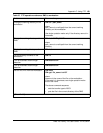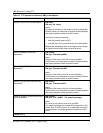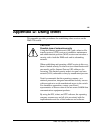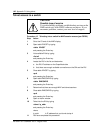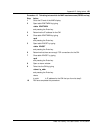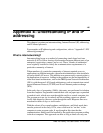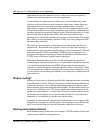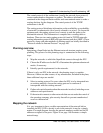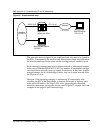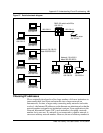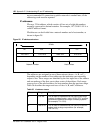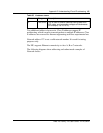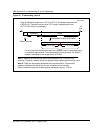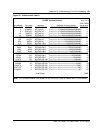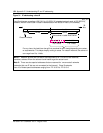
Appendix E: Understanding IP and IP addressing 147
DMS-100 Family EIU User Guide TELECOM12
The routed protocol of the architecture (usually the network-layer protocol)
creates connectionless datagrams or packets. The address information
contained in the datagram header enables each encountered router to make a
routing decision for the datagram. The routed protocol of the TCP/IP
architecture is the IP.
The routing protocol distributes information on the availability or reachability
of networks or subnetworks (also loosely referred to as wires). To choose the
optimum path, the routing protocol uses a metric to rank the paths to the
destination network. This information is compiled into a routing table or
database. There are two main routing protocols found in TCP/IP networks:
routing information protocol (RIP) and open shortest path first (OSPF). These
protocols, along with other methods of defining routes are briefly described in
"Protocols related to Internet Protocol" on page 160.
Planning overview
Integrating a SuperNode into the Ethernet network structure requires some
planning. The process for this planning stage is summarized in the following
steps:
1 Map the networks to which the SuperNode connects through the EIU.
2 Choose the IP addresses for the EIUs. Determine the optimum subnetwork
masks, if necessary.
3 Identify special requirements for the networks.
If there is only one EIU in the network, the planning stage is complete.
However, if there are other routers, of any manufacture, included in the plans,
three additional steps are needed:
1 Select a routing protocol. In cases where the EIU is to be integrated into
an existing network, choose the routing protocol to conform or
interoperate with the existing network.
2 Gather relevant information about the networks involved, including server
addresses and special needs.
3 If the network connects to other networks that are not under the control of
the operating company, plan security firewalls to prevent unauthorized
access to the network.
Mapping the network
It is very important to have a usable representation of the network before
installing the EIU. If IP is already in use in the network, it may be a simple
matter of a rough diagram showing the network numbers needed and the IP
addresses assigned to the ports. Figure 26 on page 148 illustrates a simple
network map.



